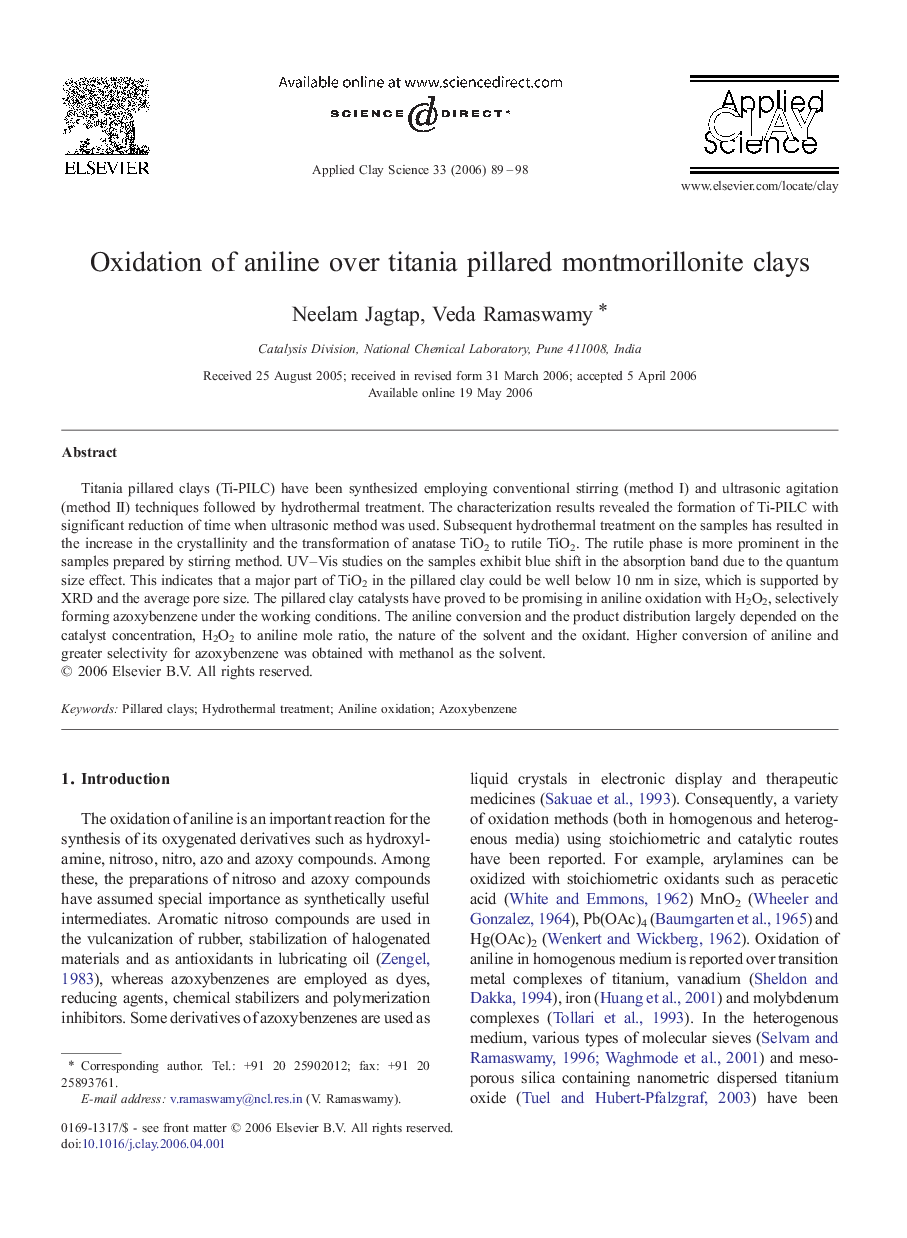| Article ID | Journal | Published Year | Pages | File Type |
|---|---|---|---|---|
| 1696648 | Applied Clay Science | 2006 | 10 Pages |
Titania pillared clays (Ti-PILC) have been synthesized employing conventional stirring (method I) and ultrasonic agitation (method II) techniques followed by hydrothermal treatment. The characterization results revealed the formation of Ti-PILC with significant reduction of time when ultrasonic method was used. Subsequent hydrothermal treatment on the samples has resulted in the increase in the crystallinity and the transformation of anatase TiO2 to rutile TiO2. The rutile phase is more prominent in the samples prepared by stirring method. UV–Vis studies on the samples exhibit blue shift in the absorption band due to the quantum size effect. This indicates that a major part of TiO2 in the pillared clay could be well below 10 nm in size, which is supported by XRD and the average pore size. The pillared clay catalysts have proved to be promising in aniline oxidation with H2O2, selectively forming azoxybenzene under the working conditions. The aniline conversion and the product distribution largely depended on the catalyst concentration, H2O2 to aniline mole ratio, the nature of the solvent and the oxidant. Higher conversion of aniline and greater selectivity for azoxybenzene was obtained with methanol as the solvent.
